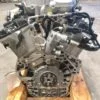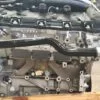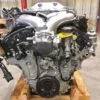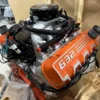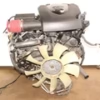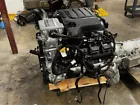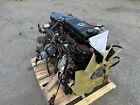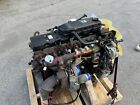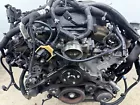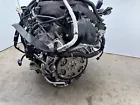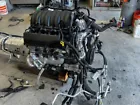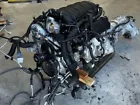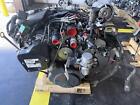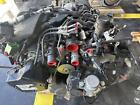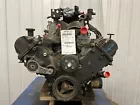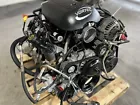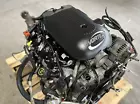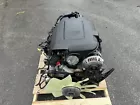The CTS STS 3.6L engine is part of the Cadillac STS (Seville Touring Sedan) lineup, which was produced from the early 2000s to 2011. Specifically, the 3.6L V6 engine is part of the Cadillac CTS model range, and it’s a mid-sized luxury sedan that combines performance with luxury features.
Here’s a breakdown of theCTS STS 3.6L engine (also known as the GM 3.6L VVT V6 engine):
Engine Details
Engine Code: LFX
-
Type: V6
-
Displacement: 3.6 liters (221 cubic inches)
-
Configuration: DOHC (Double Overhead Camshaft), V6
-
Fuel System: Direct Injection (DI)
-
Fuel Type: Gasoline
-
Compression Ratio: 11.3:1
-
Horsepower: 318 hp @ 6,500 rpm
-
Torque: 275 lb-ft @ 5,200 rpm
-
Redline: ~6,800 rpm
-
Turbocharged Version: Available in certain trims (Cadillac CTS-V and other variants)
-
Cam Type: VVT (Variable Valve Timing)
Performance Features
-
Direct Injection (DI):/Direct injection improves fuel efficiency and power output by delivering fuel directly into the combustion chamber. This technology allows for better atomization and control over the air-fuel mixture.CTS STS 3.6L engine
-
Variable Valve Timing (VVT):
-
VVT optimizes engine performance at different RPMs by adjusting the timing of the intake and exhaust valves, providing both improved fuel efficiency and a wider powerband.
-
-
Aluminum Alloy Block and Heads:
-
The engine uses a lightweight aluminum alloy block and cylinder heads, which helps to reduce overall engine weight while maintaining strength.
-
-
Dual Overhead Cam (DOHC):
-
DOHC allows for better airflow through the engine, allowing for higher RPMs and better engine breathing, which is crucial for performance in a luxury sedan.
-
-
Smooth Power Delivery:
-
The engine offers a well-balanced power delivery that is not overly aggressive but still gives a satisfying driving experience. Its output of around 318 hp is suitable for the luxury sedan’s performance expectations without compromising comfort.
-
Applications
This engine was used in the CTS STS 3.6L engine but also found its way into the STS and other GM vehicles, as it was part of GM’s High Feature V6 family. Here’s how it was used:
-
Cadillac CTS (Base and Luxury trims)
-
This engine powered the base trims of the CTS from the 2008 model year onward.
-
Performance balanced with luxury, achieving solid acceleration and cruising comfort.
-
-
Cadillac STS:
-
The STS was the more upscale and larger version of the CTS in the Cadillac lineup, and it also offered the 3.6L V6 engine, which was designed to give a good balance between everyday drivability and refined performance.CTS STS 3.6L engine
-
-
Chevrolet Impala (LTZ trim) & other GM models:
-
GM used the same 3.6L engine in other vehicles in their lineup, such as the Chevrolet Impala and other upscale trims of the Buick and Chevrolet models.
-
Performance & Driving Dynamics
The 3.6L V6 engine delivers a strong and reliable power output, but it’s not a high-performance engine compared to, say, a Cadillac CTS-V with a supercharged V8. However, the 3.6L version still offers an enjoyable driving experience due to:
-
Smooth acceleration without excessive noise or harshness.
-
Good highway cruising capabilities with excellent low-end torque and a comfortable, quiet cabin.
-
Responsive handling when paired with a balanced chassis, providing that signature Cadillac luxury performance.
Example Times:
-
0–60 mph: Around 6.0–6.5 seconds (depending on the trim and model year).
-
Quarter-mile: Roughly 14.5–15.0 seconds.
Maintenance & Reliability
This engine is known for being quite reliable when properly maintained. However, like many GM engines of this era, it does require regular maintenance to ensure longevity
-
Timing chains and valve lifter issues have been reported on some versions, although they are generally durable with proper care.
-
Fuel injectors and intake valves can sometimes get carbon buildup, a common issue with direct injection engines.
-
Regular oil changes are crucial for engine longevity, and using high-quality synthetic oils is recommended to keep the engine running smoothly.
Key Considerations
-
Fuel Economy:
-
The 3.6L V6 offers decent fuel efficiency for a luxury sedan of this size, but it is not as efficient as modern turbocharged 4-cylinder engines.
-
EPA Ratings typically hover around 18–20 mpg city and 26–28 mpg highway.
-
-
Aftermarket Tuning:
-
If you want to boost power or modify the 3.6L, there are cold air intakes, exhaust systems, and performance chips available. However, it’s essential to note that this engine isn’t known for huge aftermarket performance gains without forced induction.
-
Comparison to Other Cadillac Engines
Here’s how the 3.6L compares to other Cadillac engines:
| Engine Model | Displacement | Horsepower | Torque | Application |
|---|---|---|---|---|
| 3.6L V6 (LFX) | 3.6L | 318 hp | 275 lb-ft | Base trims of CTS, STS |
| 3.0L V6 (LF1) | 3.0L | 335 hp | 400 lb-ft | CT6, Escalade |
| 6.2L V8 (LT1) | 6.2L | 455 hp | 455 lb-ft | CTS-V, Corvette |
| Supercharged 6.2L V8 | 6.2L | 640 hp | 630 lb-ft | Cadillac CTS-V, CT6-V |
Aftermarket Mods for the 3.6L
If you’re considering modifying the 3.6L engine, here are some ideas:
-
Cold Air Intake – Increases airflow to the engine and improves throttle response.
-
Exhaust System – A cat-back exhaust or headers can provide better sound and slight performance gains.
-
Performance Tuning – A custom ECU tune can help unlock additional horsepower and torque.
-
Forced Induction – Adding a supercharger or turbocharger would increase the power dramatically but would require additional supporting modifications (fuel, cooling, etc.).
Would you like more info on how to boost performance, or are you thinking of restoring or tuning a specific Cadillac with the 3.6L V6 engine? Let me know how I can assist!


